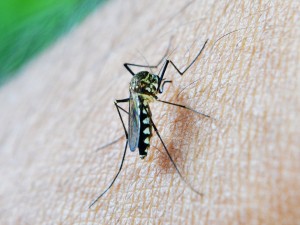Updated July 10, 2019
The Zika Virus is a mosquito-borne virus spread from the bite of the Aedes aegypti mosquito (which also spreads the dengue and chikungunya viruses). The Zika Virus can also be sexually transmitted. If a pregnant woman becomes infected with the Zika virus, it can cause the baby to be born with a condition called, microcephaly. Microcephaly is a condition wherein a baby’s head is significantly smaller than normal because of underdevelopment of the brain.1
“Zika virus infection poses many unknown risks, especially to those of reproductive age.” – Catherine Y. Spong, M.D., Acting Director, NICHD2
Zika Virus and Microcephaly
The rates of microcephaly among women infected with the virus in Brazil were at one time estimated to be as high as 22%. The rates of microcephaly in Brazil were more than 20 times the number that is usually seen, and more than 40 infants died. Those surviving face a lifetime of impaired development.3 Data regarding the risk to a pregnant woman acquiring the Zika virus infection of having a baby born with microcephaly seems quite different in the two areas where a link seems to exist: French Polynesia and Brazil.4 In both regions, the risk of microcephaly and possibly other birth defects (including growth restriction) seem to be highest in women infected during the first trimester of pregnancy. However, in French Polynesia (outbreak Oct 2013 through April of 2014 with 66% of the population infected), the risk of having a baby born with microcephaly was 1% in women infected in the first trimester, while in Brazil the preliminary data indicates the risk to be as high as 22%. Curiously, a similar link to microcephaly was never made in previous outbreaks of the Zika virus. It is unknown whether the link was missed, whether there was possibly a very different viral strain in Brazil, or whether other factors contributed to this phenomenon.
Guillain-Barré Syndrome
Zika virus is also associated with Guillain-Barré Syndrome – a syndrome in which the immune system attacks the nerve sheaths (the covering of the nerves) that help conduct impulses from one nerve to another (demeyelination). Guillain-Barré can cause paralysis which typically moves from the feet upward, or in rare cases, from the face downward. It can paralyze the diaphragm (muscle responsible for breathing) requiring a patient to be placed on a respirator to survive.
Zika Virus Travel Information
Continental US
There is currently no reported transmission of the Zika virus in the continental United States, which also includes the states of Florida and Texas (wherein there were reports of local transmission in 2016-2017). Please CHECK HERE to view current travel information at the US Centers for Disease Control (CDC).
International & US Territories
To quote the CDC, “Know before you go!” Zika virus does continue to be a problem in many areas of the world. Please CHECK HERE for current Zika travel information for international destinations and US territories.5
Zika Virus Symptoms
There are often no symptoms. The most common symptoms of Zika virus are fever, rash, joint pain, or conjunctivitis (red eyes). Other common symptoms include muscle pain and headache.6 The time it takes from being exposed to and then developing symptoms of Zika virus disease is not known, but is likely to be a few days to a week. If you are diagnosed with Zika virus disease, treat it as you would the flu, and avoid mosquito bites the first week of infection as the virus is in the blood during the first week, and can thus be transmitted to others through mosquito bites.7
Precautions You Can Take
- Discourage mosquitoes and mosquito breeding by eliminating standing water from your yard, garden or home.
- Use Air Conditioning, and use screens on your windows.
- Wear long sleeves and long pants.
- Use mosquito netting in tropical areas, sub-tropical areas, or any area where there are a lot of mosquitoes (and definitely do so if you are going to sleep outside).
- If you are sexually active, use condoms for six months upon your return if you have traveled to an area wherein the Zika virus is mosquito-transmitted.
- Use an EPA-registered insect repellent. Do not use insect repellent on babies younger than 2 months old. Do not use products containing oil of lemon eucalyptus or para-menthane-diol on children younger than 3 years old.
What Kind of Insect Repellent Should I Use?
DEET (N,N-Diethyl-meta-Toluamide)
The medical literature recommends DEET, but we have some reservations about it. There are studies showing that DEET can be toxic to children, even going so far as to state that: “Since the potential toxicity of DEET is high, less toxic preparations should be probably substituted for DEET-containing repellents, whenever possible.”8,9 DEET is believed to have neurotoxic effects, human metabolic and metabolic interactions in studies on veterans who have been deployed overseas.10,11 The National Library of Medicine states that, “By far, the most serious complication of DEET poisonings is damage to the nervous system.”12
Lemon Equcalpytus (p-menthane 3,8-diol (PMD))
Naturally, the insect repellent products to which holistically-minded people are most drawn are lemon eucalyptus plant-based insect repellents. Lemon eucalyptus-based insect repellents have been studied, and have been shown to be as effective as DEET-containing insect repellents in mosquito-ridden areas,13,14 but cannot be used on children younger than 3 years old.
Picaridin (1-piperidinecarboxylic acid 2-(2-hydroxyethyl)-1-methylpropylester)
Another choice: picaridin-based insect repellents. Picaridin is a synthetic compound which resembles the compound, “piperine,” (from black pepper). In studies, rats and humans excrete nearly all picaridin in their urine within one day of exposure showing that it breaks down efficiently in the body.15 To date, only minor toxicity is reported with regard to picaridin (which was due to unintentional ingestion).16 “Picaridin has a favorable safety profile,” but has not been commercially available as long as DEET products and therefore doesn’t have much information regarding adverse effects.17 Avon makes several picaridin-based insect repellents.
IR-3535 (Ethyl Butylacetylaminopropionate)
The insect repellent, IR-3535, a repellent not used as extensively as DEET as it has been developed more recently,18 has been used for about 20 years (prior to its use in the U.S.) in Europe as an effective repellent against mosquitoes, biting flies and deer ticks.19 IR-3535 was registered for use in the U.S. in 1999.20
Permethrin (3-Phenoxybenzyl (1RS)cis,trans-3-(2,2-dichlorovinyl)-2,2-dimethylcyclopropanecarboxylate) – NOT FOR USE ON THE SKIN
Permethrin is NOT for use on the skin. Permethrin is only to be used on clothing, and hiking and camping gear.
Permethrin acts as a neurotoxin to insects. Its effects on mammals, however, are said to be not significant.21 The EPA, however, has concluded that Permethrin is a “weak carcinogenic.”22
Find the Insect Repellent that’s Right for You
Find the EPA-registered insect repellent that is right for you. To see if your insect repellent is EPA-registered, you can use this handy search tool provided by the EPA: SEARCH HERE at the EPA.Gov, or to download a list of EPA-registered insect repellents, CLICK HERE 23
READ MORE about how to protect yourself and your loved ones >>>
Precautions to Take When Using Insect Repellents
- Apply repellents to exposed skin or clothing (not under the clothing) as directed on the product label.
- Do not use repellents over cuts, wounds, or irritated skin.
- When using sprays, spray on hands first, and then apply to face. Don’t apply repellents to eyes or mouth, and use only lightly around ears.
- Wash hands after application to avoid accidental exposure to eyes or mouth.
- Children should not handle repellents. Instead, adults should apply repellents to their own hands first, and then gently spread on the child’s exposed skin. Do not apply repellent directly to children’s hands. After returning indoors, wash your child’s treated skin and clothing with soap and water or give the child a bath.
- Use just enough repellent to cover exposed skin or clothing. Heavy application and saturation are unnecessary for effectiveness. If biting insects don’t respond to a thin film of repellent, apply a little more.
- Once you’ve returned indoors, wash repellent-treated skin with soap and water, or bathe. Wash treated clothing before wearing it again. This precaution may vary with different repellents—check the product label.24
Insect Repellents and Sunscreen
Apply repellents according to directions on the label. Apply sunscreens as directed on the label. Apply sunscreen first, and then apply the repellent. The Centers for Disease Control recommend you not use products that are a combination of repellent and sunscreen because there are data that show the SPF protection is less in combination products which would therefore make you want to apply more and more. The recommendation is to use separate products. 25
Claims Regarding Microcephaly in Brazil
There were past claims circulating on the internet that the microcephaly being reported in Brazil was not the result of the Zika virus but rather the result of a larvicide produced by a chemical company.26 However, in 2013 – 2014, increasing rates of microcephaly secondary to Zika virus have been reported in French Polynesia27 where the larvicide (which was used in Brazil) had purportedly not been used. The French Polynesian government denies using the larvicide in question, but did admit to using others. At this point, the evidence does not seem to support the claims.28
The Doctor Emi Team Updated July 10, 2019


